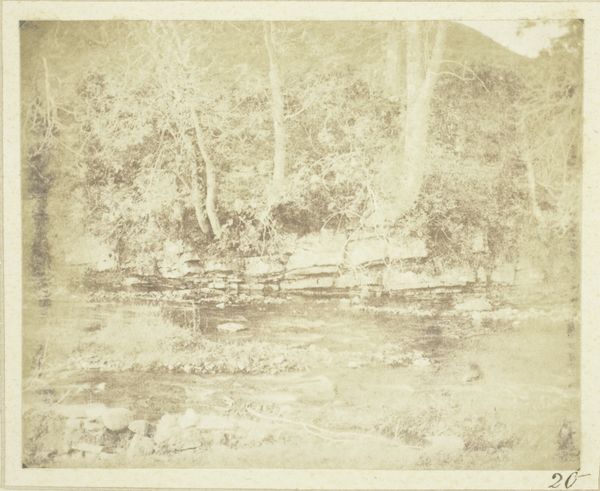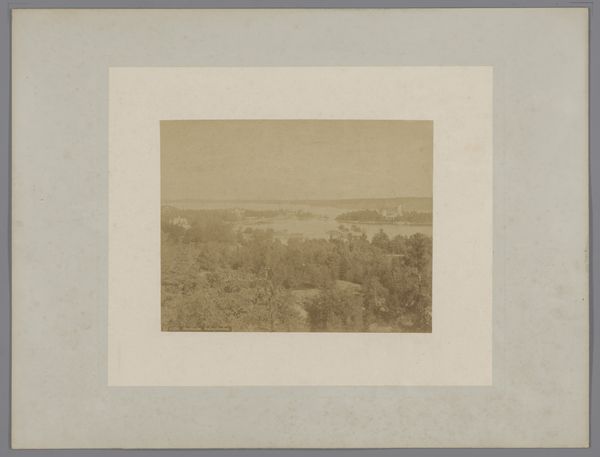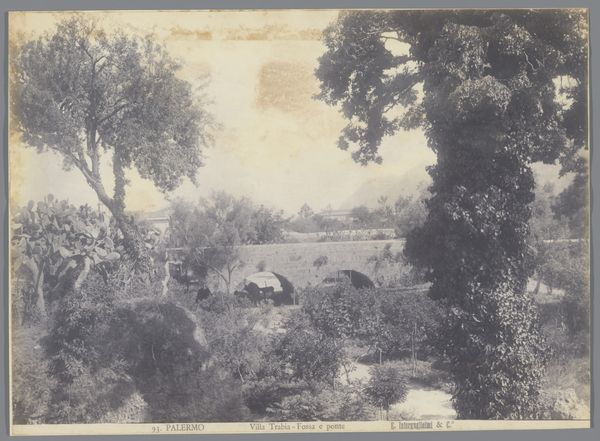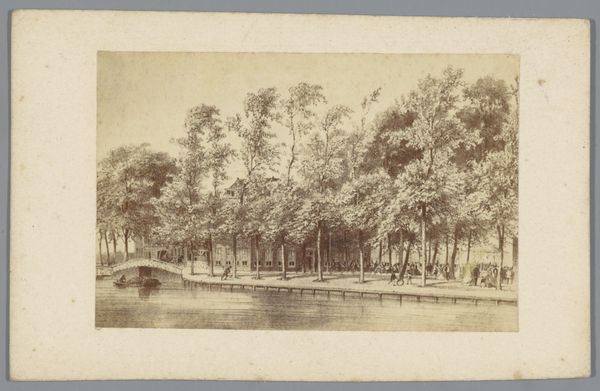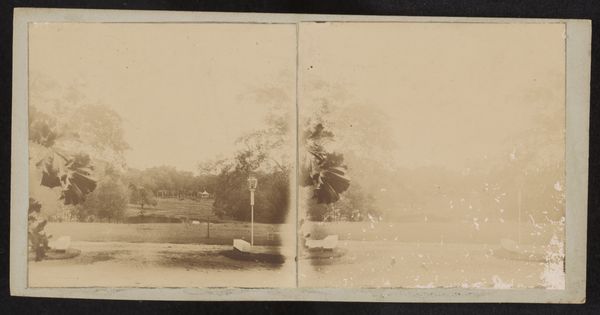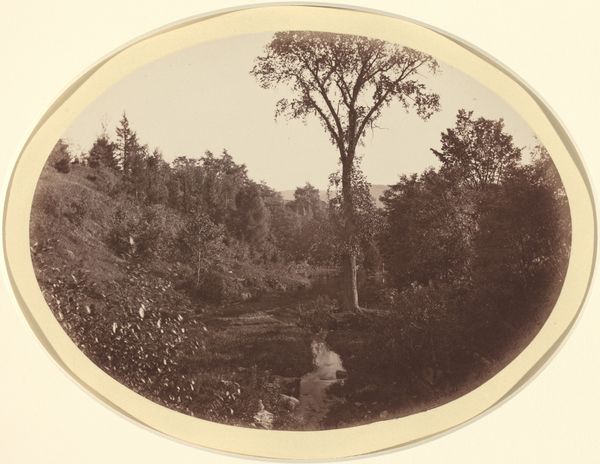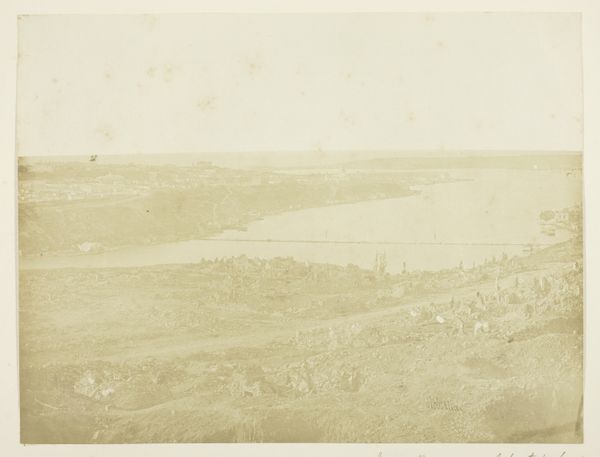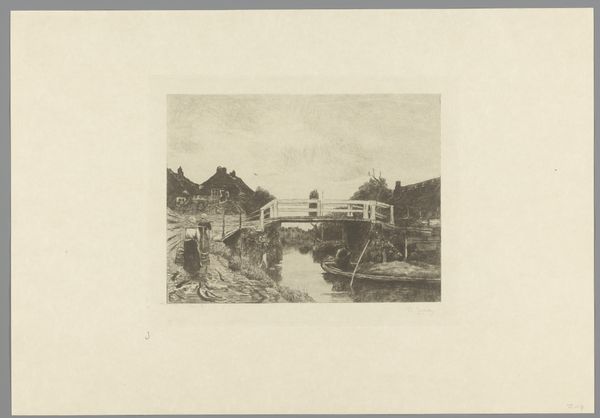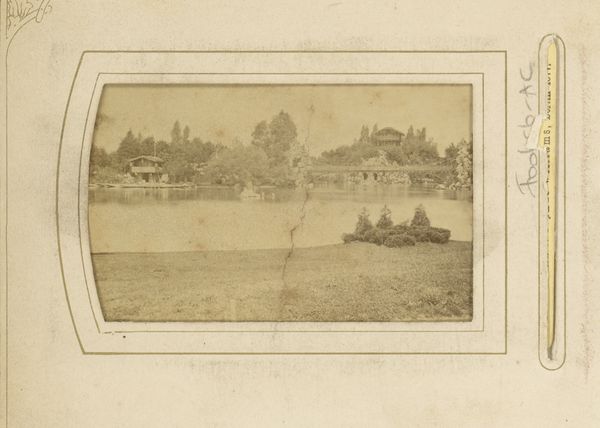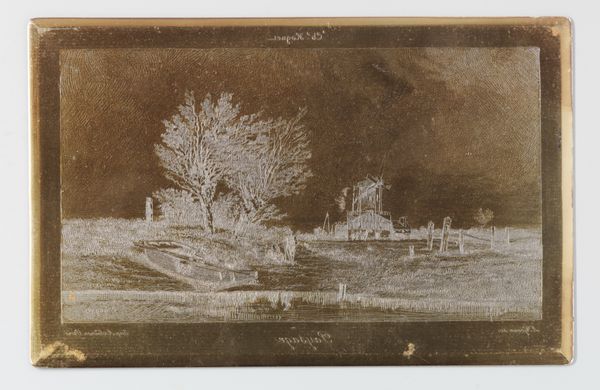
print, photography
# print
#
landscape
#
photography
#
orientalism
Dimensions: height 153 mm, width 204 mm
Copyright: Rijks Museum: Open Domain
Curator: Well, here we have "Park in Teheran, Iran," a photograph dating from around 1885 to 1910, credited to Antoine Sevruguin. What's your first impression? Editor: Hushed. Like a secret garden slumbering in the heat. There’s this delicate tonal range, sepia bordering on silver, that lends it such a nostalgic, almost mournful air. It's beautiful, but with a certain melancholy. Curator: It does have that vintage feel, doesn't it? I’m struck by the way Sevruguin captures both the designed artifice of the park, the carefully laid out paths, the architecture – and contrasts this with the hazy, almost dreamlike quality of the distant mountains. He frames paradise as something quite real. Editor: Absolutely. It's the ordered nature tamed. Those lampposts along the pond evoke Western influence, a very specific visual language, juxtaposed against an ancient, softer landscape in the background. Is that supposed to echo a memory of Europe? Curator: Perhaps. Sevruguin was a fascinating figure, really, with a Russian father and Georgian mother, working as a photographer in Iran. He portrays it in that somewhat clichéd style we now term "Orientalist," though his intentions, his relationship to the place itself, may have been more complex than that label suggests. Editor: I suppose. The lake, like a still mirror reflecting sky, pulls me right into its placid surface. Water carries profound significance throughout culture – reflecting not just appearances but also internal depths and transitions. What do you feel the pond might signify within this cultural and personal framework? Curator: Interesting! I read it perhaps a bit more plainly – simply as an element of designed leisure, a feature to attract wealthy Tehrani society to the park. A sign of status and cultivated taste. But your interpretation of the water opens it up. The still water hides the real depth. Editor: Agreed, it holds an immediate reading, absolutely – leisure and status – that might have to work as a deliberate construct, to offer an imagined world. It all goes together – designed space, natural symbols – to forge an entire reality. Curator: Yes, quite! Seeing it now, your focus has heightened for me the staged artificiality, which invites its audience to accept something just slightly removed from the authentic world. Editor: In that sense, images carry the echo of culture and memory through constructed design and framing, don't they? It’s lovely how one still image can open the gates on so many potential directions. Curator: It does – a quiet, intriguing park captured on film that speaks volumes about art, culture, and representation.
Comments
No comments
Be the first to comment and join the conversation on the ultimate creative platform.
